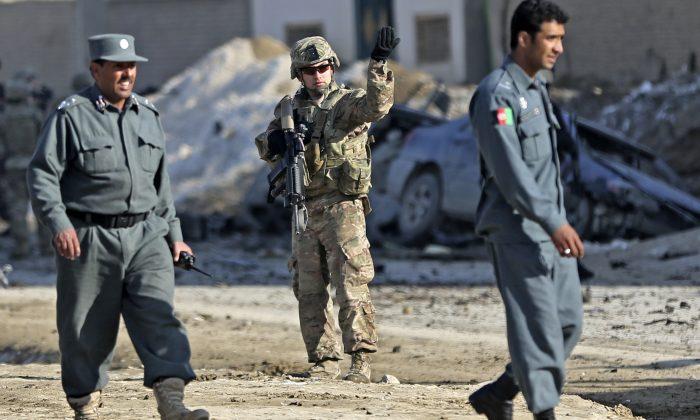A decade ago, the roads were few and unpaved. Cellphones were nearly nonexistent, and landlines graced only some homes. A lot has changed since U.S. boots hit Afghanistan’s soil. But perhaps not enough. At a recent New America event, experts reflected on the many challenges that will remain long after the “victorious” exit of U.S. troops this year – and the shifting role that the U.S. Agency for International Development (USAID) will play post-withdrawal.
With this in mind, USAID recently unveiled a sequence of programs to ensure long-term growth in the country. In the past, USAID’s work in Afghanistan has been criticized amidst controversies over corruption and misuse of funds. To set the record straight, Donald “Larry” Sampler Jr., the newly sworn-in Assistant to the Administrator for USAID’s Office of Afghanistan and Pakistan Affairs, kicked off the event with a vociferous defense of the Agency’s Afghanistan work: noting that Afghanistan has always been “important to U.S. special interests” and that “you don’t have to go to Afghanistan to find politicians [looking to spin a situation],” Sampler shared his vision of Afghanistan as a nation with many setbacks but a considerable amount of progress following a dark and tumultuous decade.
That decade began, of course, in 2002, when the nation was left without a functioning government after the overthrow of the Taliban. The country was a hotbed for terrorist attacks and spotaneous acts of violence, while maintaining an economy so shattered it left many with a cynical and pessimistic view for the future. Today, though violence and conflict persist, a new narrative has emerged. Sampler pointed to a 20-year increase in life expectancy, rising enrollment of women in universities, “persistent engagement from the Afghan community,” and the upcoming presidential election as signs of progress and potential for sustainable growth.
To keep up that progress and growth, Afghanistan will also need to shore up its democratic institutions – especially encouraging a system of checks and balances, experts said. Other key elements of any long-term plan for sustainability include: Agriculture, education, and international economic openness between Afghanistan, Pakistan, and India. Jarrett Blanc, the U.S. State Department’s Deputy Special Representative for Afghanistan and Pakistan, argued that the “transition itself has already taken place, and…succeeded” and that the initial struggle itself has passed. Now, with USAID “responding to a changing environment” and the “first election in Afghanistan’s contemporary history where the legal framework is [driven by famers]” fast approaching, the real challenge, Blanc argued, falls to the Afghan people. They must insure that their governmental systems remain strong and intact.
The media, too, will play a critical role in the country’s future. Sampler emphasized, with a hint of acidity, the media’s power, and responsibility, to construct the country’s narrative. Noting that the American public is not “grasping that...Afghanistan has changed [as a country],” he advocated for an approach that would counter the tendency for negative stories to dwarf all others. “I like to talk about the positive changes and [I encourage everyone who can] to be an advocate for the new Afghanistan,” he suggested. “Stories are accurate but partial.” Indeed they are.
The three programs being introduced by USAID are as follows:
- Afghanistan University Support and Workforce Development Program (5-Year)
- Afghanistan Trade and Revenue Project (5-Year)
- Regional Agriculture Development Project (5-Year)
To learn more, visit USAID’s website. To see the full video and conversation, visit New America.


Friends Read Free